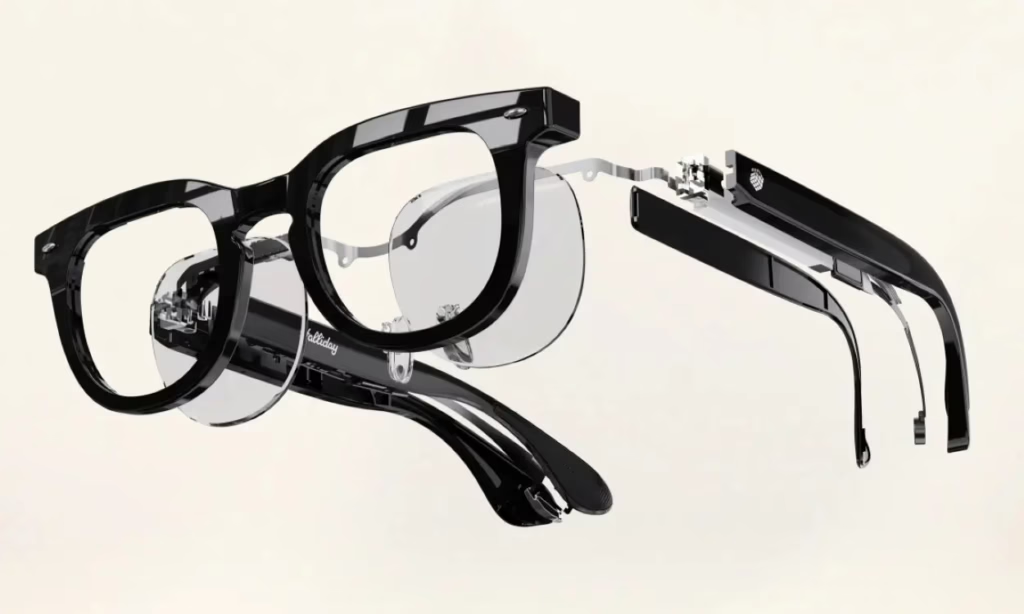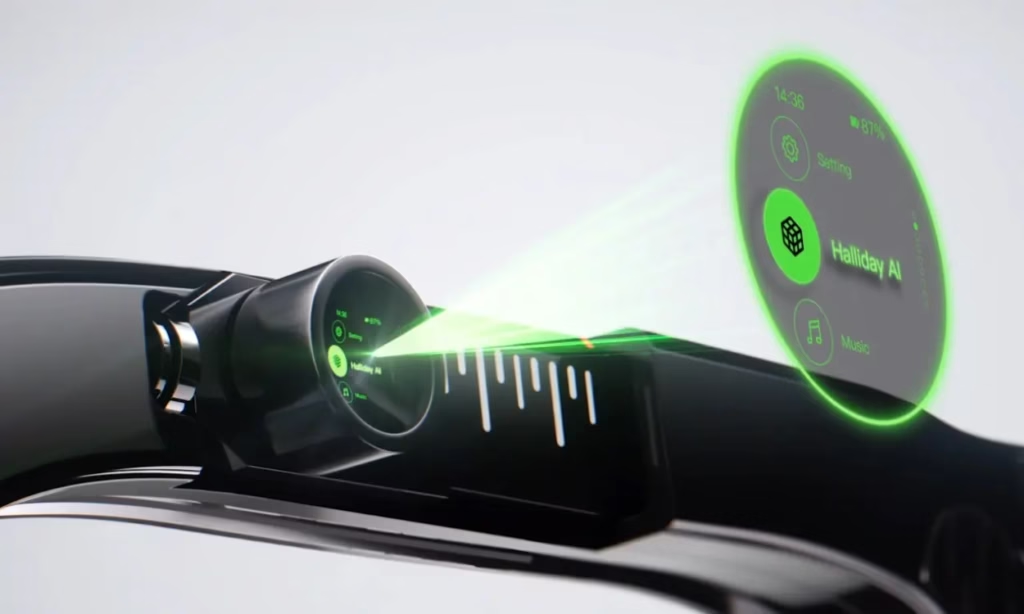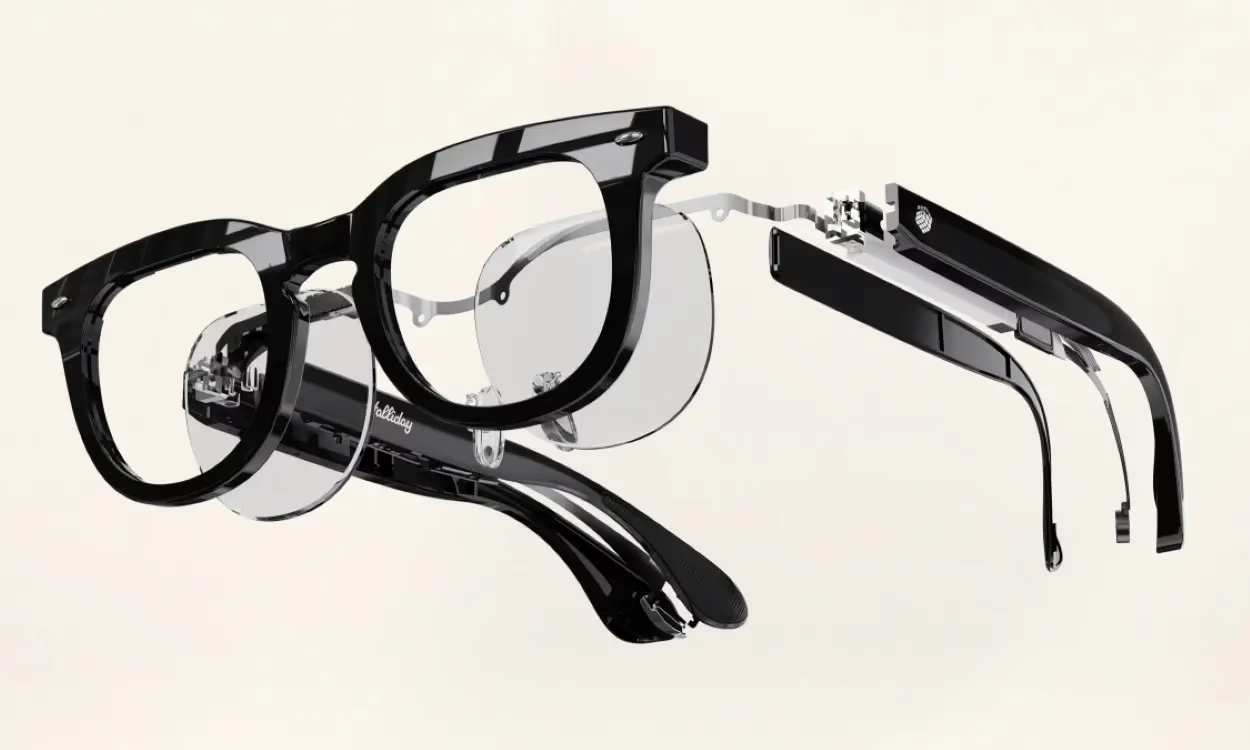
Remember Google Glass? Its innovative small screen brought notifications and more into your field of view but fell short of becoming a mainstream hit. In 2024, Meta introduced smart glasses with onboard AI, but they too didn’t achieve the widespread success their creators envisioned. Now, a new contender, Halliday, aims to redefine the smart glasses experience by combining the best features of both predecessors into a single, game-changing device.
Halliday Glasses, a wearable technology startup, is unveiling its flagship product at CES 2025. These sunglasses, designed with a vintage aesthetic, feature a near-eye display cleverly integrated into the top-right side of the frame. Dubbed the “DigiWindow,” this 3.5-inch display is designed to be comfortably visible, whether you have perfect 20/20 vision or wear prescription lenses. Halliday proudly claims it as the smallest near-eye display ever created.

The display on the Halliday Glasses is designed for your eyes only others around you won’t see its contents. You can control the screen using voice commands, touch gestures along the frame, or an innovative smart ring that doubles as a trackpad.
What truly sets these glasses apart is their onboard AI assistant. While the concept may remind you of Meta’s AI glasses, Halliday takes it a step further. Instead of needing to wake the assistant and provide prompts, the AI is always listening (with your consent) to offer real-time suggestions or insights during conversations. This proactive approach aims to make interactions smoother and more intuitive.
Halliday promises that the AI can handle a range of tasks, including translating up to 40 languages, providing live directions, transcribing voice notes, and displaying lyrics as you listen to music. However, the AI requires a Bluetooth connection to your phone to access the internet for these features. As for the AI model powering the system? That remains a mystery.
According to Halliday’s website, their smart glasses are set to launch by the end of Q1 2025, with a price range of $399 to $499. At that price point, they’re certainly an intriguing proposition. The real question, however, lies in how well the display despite its compact size and placement functions in practice.
Will the DigiWindow display seamlessly integrate into the user’s field of vision, or will it cause discomfort, requiring constant squinting to read its contents? And will it strike the right balance between functionality and unobtrusiveness? These questions, and more, will be answered when the glasses officially hit the market in just a few months.




